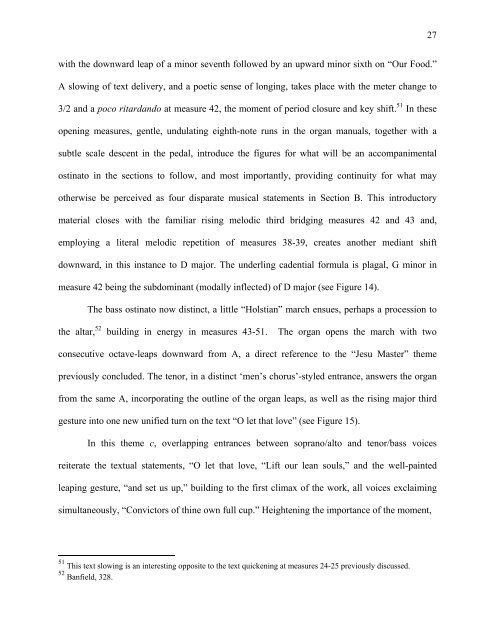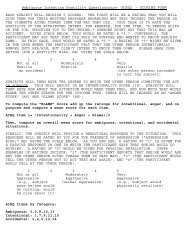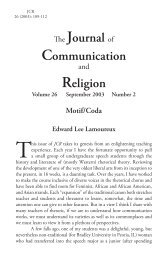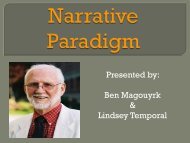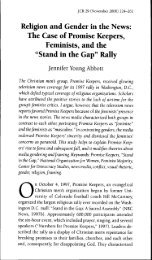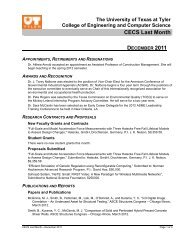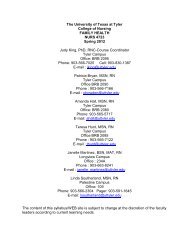"History, Analysis and Performance Considerations of Gerald Finzi's ...
"History, Analysis and Performance Considerations of Gerald Finzi's ...
"History, Analysis and Performance Considerations of Gerald Finzi's ...
You also want an ePaper? Increase the reach of your titles
YUMPU automatically turns print PDFs into web optimized ePapers that Google loves.
27with the downward leap <strong>of</strong> a minor seventh followed by an upward minor sixth on “Our Food.”A slowing <strong>of</strong> text delivery, <strong>and</strong> a poetic sense <strong>of</strong> longing, takes place with the meter change to3/2 <strong>and</strong> a poco ritard<strong>and</strong>o at measure 42, the moment <strong>of</strong> period closure <strong>and</strong> key shift. 51 In theseopening measures, gentle, undulating eighth-note runs in the organ manuals, together with asubtle scale descent in the pedal, introduce the figures for what will be an accompanimentalostinato in the sections to follow, <strong>and</strong> most importantly, providing continuity for what mayotherwise be perceived as four disparate musical statements in Section B. This introductorymaterial closes with the familiar rising melodic third bridging measures 42 <strong>and</strong> 43 <strong>and</strong>,employing a literal melodic repetition <strong>of</strong> measures 38-39, creates another mediant shiftdownward, in this instance to D major. The underling cadential formula is plagal, G minor inmeasure 42 being the subdominant (modally inflected) <strong>of</strong> D major (see Figure 14).The bass ostinato now distinct, a little “Holstian” march ensues, perhaps a procession tothe altar, 52building in energy in measures 43-51. The organ opens the march with twoconsecutive octave-leaps downward from A, a direct reference to the “Jesu Master” themepreviously concluded. The tenor, in a distinct ‘men’s chorus’-styled entrance, answers the organfrom the same A, incorporating the outline <strong>of</strong> the organ leaps, as well as the rising major thirdgesture into one new unified turn on the text “O let that love” (see Figure 15).In this theme c, overlapping entrances between soprano/alto <strong>and</strong> tenor/bass voicesreiterate the textual statements, “O let that love, “Lift our lean souls,” <strong>and</strong> the well-paintedleaping gesture, “<strong>and</strong> set us up,” building to the first climax <strong>of</strong> the work, all voices exclaimingsimultaneously, “Convictors <strong>of</strong> thine own full cup.” Heightening the importance <strong>of</strong> the moment,51 This text slowing is an interesting opposite to the text quickening at measures 24-25 previously discussed.52 Banfield, 328.


